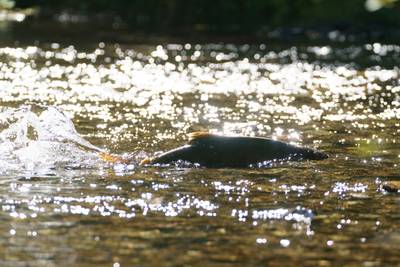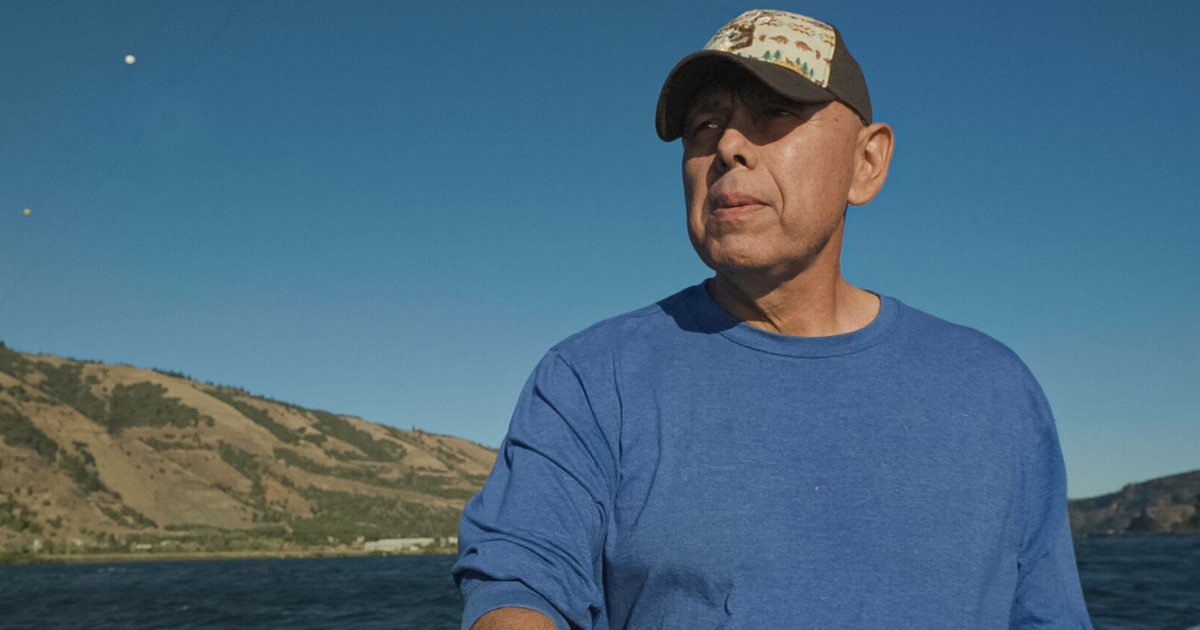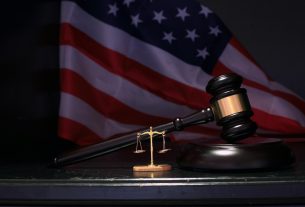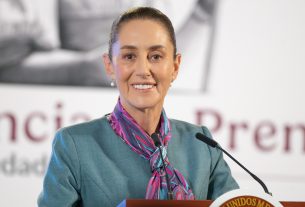|
Getting your Trinity Audio player ready...
|
Credit:Courtesy of Randy Settler and Marcella Settler-Kantjas.
In 1969, U.S. District Judge Robert Belloni ruled that Oregon had violated treaty rights by failing to ensure a “fair share” of the harvest for tribes. Critically, the ruling made tribes co-managers of salmon, including hatchery production.
Five years later came two more landmark cases. One was Settler v. Lameer, the case that grew out of the arrest of Alvin Settler and Mary Goudy-Settler for fishing without permits and using illegal gear. The 9th Circuit Court of Appeals ruled that tribes had the right to regulate tribal fishing both on and off the reservation.
The other was the most famous ruling of the Fish Wars, the Boldt decision, which held that tribes had the right to half of all harvestable fish.
Tribal people had reestablished not just their right to fish, but a role in managing the river and its salmon. They had a chance to rebuild what they’d lost. But even with the courts on their side, they would face harassment by authorities for decades.
July 1978, Summer Chinook/sockeye season
Yearly catch: 1,455,000 lbs
Salmon runs weren’t what they’d been before the dams, but there were still fish to catch, and Goudy-Settler knew how to make the most of it.
With money they’d saved, the Settlers bought property on the river near Stevenson, Washington, about 60 miles east of Portland, Oregon.
They built a home and a building for processing fish. Goudy-Settler started buying and selling salmon from up and down the river to supplement her family’s catch. Eventually, she became one of the biggest fish dealers on the river.
“Some people called themselves ‘fish hogs,’” said Sam George, who has fished for the Settlers since he was a boy and now helps run the family’s crew. “She was a true fish hog. She wanted it.”
She bought boats for Randy and Carl, and they hauled in as much fish as they could. And the Settlers would put kids like George to work cleaning fish or camping by the river late into the night to watch their nets for thieves.
She saw fish dealing as a way to help the tribe, and pulled in money from restaurants as far away as New York.
The police said she was a major salmon poacher. The state wanted to limit the tribes’ catch to protect salmon. The Settlers contended their share was insignificant compared to all the other threats to salmon.
In the summer of 1978, undercover agents from the Oregon State Police posed as buyers, and prosecutors alleged Goudy-Settler had illegally sold $381,000 worth of salmon caught outside the commercial season.
At home awaiting trial, she would lay on her bed for hours with a legal dictionary, trying to decipher case documents. She’d recently learned to read, with the help of her niece and a pile of Cosmopolitan magazines.
She decided to plead guilty, avoiding a public trial she thought she’d have no chance to win.
She was sentenced to 10 months in an Oregon prison. Inside, people kept asking her about her crime.
“What crime?” she’d ask them, according to a 1982 interview in The Columbian.
She and Alvin divorced during her imprisonment. Mary kept the family’s tribally registered fishing sites. Police kept watching.
In 1983, in the parking lot of an undisclosed Portland hotel, undercover police arrested Goudy-Settler and her sons, Carl and Randy Settler, for allegedly selling more than 600 pounds of illegal salmon.
“This fish should be swimming,” a newspaper account quoted an arresting officer as saying while he held one of the seized salmon.
Goudy-Settler was convicted later that year of selling fish without a state license.
Her appeal sat for nearly a decade after her attorney died. In the meantime, she stopped buying and dealing fish, and her family just sold what they could catch.
Settler lost her appeal in 1992, and she was sentenced to 30 days in jail.
Tribal leaders were outraged. Over the years, appreciation had grown for Mary Goudy-Settler and Alvin Settler, and the river tribes honored them for fighting to secure the right to fish for Randy’s generation and beyond.
When Randy took up the mantle, the fight had changed: It became about making sure there were still fish to catch.

Credit:Kristyna Wentz-Graff/OPB.
By the time tribes reclaimed their access to salmon, more than 100 different populations had been driven extinct. Many others were on the brink. The 1990s saw 200 distinct populations listed as threatened or endangered. Attempts by Congress and others to keep salmon off the endangered list failed.
Fingers were pointed in all directions: at logging, farming, fishing, even hatcheries. Salmon advocates sued over federal hydropower operations in 1993. Then, in 1996, the National Oceanic and Atmospheric Administration identified another threat.
Stressed salmon populations, agency scientists said, “will most likely face more acute threats of extinction with the additional burden of significant anthropogenic climate changes.” In other words, time was running out for salmon recovery efforts.
The treaty tribes responded to the crisis by publishing their own recovery plan. “The Spirit of the Salmon” outlined practical steps to help the fish; it also declared that salmon had unselfishly sacrificed themselves for the physical and spiritual subsistence of humans, and that tribes, in return, “must now employ the depths of their hearts and the expanse of their minds to save the salmon.”
November 1997, end of fall Chinook/coho season
Yearly catch: 814,000 lbs
Randy Settler routinely worked from 7 in the morning until midnight during his days on tribal council.
He’d waited a long time to be on it.
He first ran when he was 25. He didn’t get elected till 1997, when he was 42.
Settler had spent much of his youth — when he wasn’t fishing or getting arrested for it — chasing wins at Native basketball tournaments and the good times that came with them.
But he got serious about the fight for salmon.
“Every time I picked up the phone and had a conversation with him, I wound up with six more things I had to do,” Steve Parker, a longtime biologist for the Yakama Nation, recalled.

Credit:
Katie Campbell/ProPublica
Settler was outspoken and unconventional. He recalled leaping onto a table during one meeting to make a point. As a negotiating tactic, he said, he once told a National Marine Fisheries Service official that he’d put an “Indian curse” on him. He cut deals to get the tribe funding, even when it meant working with known enemies of Indian Country, like Sen. Slade Gorton, the Washington Republican who as state attorney general had argued against tribal treaty rights and sovereignty.
“A force of nature,” Charles Hudson, the former government affairs director for the Columbia River Intertribal Fish Commission, said of Settler.
He fought hard because it was a dire time for salmon.
Many populations had cratered to their lowest levels ever in the 1990s. Tribes began the work of resuscitating salmon runs with habitat improvements and hatcheries they’d specially designed to aid wild fish.
Then, in 2001, a major drought hit the Columbia River Basin, reducing the river’s flow and threatening the survival of young salmon making their way to the ocean. Settler feared the greatest die-off for migrating salmon in his lifetime.
During that drought, he argued publicly with the head of the Bonneville Power Administration, the federal seller of hydroelectric power, over its plans to suspend salmon protections to maximize power production.
That marked just one of many disputes over the federal government’s actions toward salmon and tribes. Settler summed up the tribal position in his testimony before Congress at the time.
Fish runs are in terrible condition, he told them: “The United States is not living up to its commitments in the Treaty of 1855.”

Randy Settler’s crew sets a gillnet at one of the family fishing sites that he inherited from his mother.
Credit:Katie Campbell/ProPublica.
The government spends more than $100 million every year to remake streams in the Columbia River Basin into better salmon habitat.
But scientists say most of that has been spent on projects that are too scattershot and small-scale to actually increase salmon numbers. For at least two decades, that habitat work has been used to justify degradation from the many dams on the river. Problems of excessively warm and stagnant water in the Columbia have been left largely unabated, despite numerous lawsuits against the federal government.
“It simply is not clear that habitat restoration as currently practiced can be effective enough to be
successful,” a group of 15 scientists wrote in 2015. Little has changed since then.
Though salmon runs seemed to be recovering in the late 2000s and early 2010s, the upward trend didn’t last. In the late 2010s, some populations fell to near the levels that had triggered their endangered listings years before. Tribal biologists determined the trajectory of many wild Snake River Chinook populations would lead to extinction in a matter of years.
Year to year, salmon runs fluctuate. But because of climate change, federal scientists predict, ocean survival for salmon could decline as much as 90% over the next 40 years.
April 2022, spring Chinook season
Yearly catch forecast: 3,050,000 lbs
About an hour east of Portland, the Stanley Rock fish camp is a ramshackle collection of boats, trailers and a fish-cleaning station, easily missed from the interstate.
Randy, his nephew Sam George, and George’s daughter Aiyana make this their home for much of the year because Stanley Rock is near where they are allowed to fish, according to tribal law and custom. It’s just the three of them in camp for the spring season, when they catch fish for the tribe’s ceremonies.
“What about school?” Randy teased Aiyana one day.
She looked to her dad. She had skipped school to be fishing that day, just as Randy had done so many times.
“She’s exercising her treaty right,” her dad said.
Settler wonders what will be left to catch in Aiyana’s lifetime.
“When she gets to my age, if she’s sitting in the same place, will she be able to look out on this river and say, ‘Boy, I want my first salmon’? You know, that’s something that I think about,” Settler said.
Credit:
Katie Campbell/ProPublica
Sam George is worried too, knowing the water keeps getting warmer. The 2022 run would eventually pick up, and by recent standards it ended up a good year for spring Chinook. But even in good years now, the runs are too small for the tribe to open up a spring commercial season. George has been lining up other work, helping a developer friend build strip malls.
The day after Aiyana skipped school, Settler and George drifted in with the morning’s catch to find her waiting on the dock.
“Good day today! We caught one fish,” George said to her from the boat. “Pull me in.”
Settler headed up the dock and pulled out his phone to call the Yakama tribal council about how to salvage the poor start to the season. It has been 20 years since he served on the council. He’s spent the intervening time working on salmon policy for the Columbia River Inter-Tribal Fish Commission and the federal Pacific Salmon Commission.
Settler nursed a cigarette and worked the phone, leaning against a plastic storage bin big enough to hold 1,000 pounds of fish. He watched as George tossed that morning’s salmon into the icy slush, and he and Aiyana took a seat on the tailgate.
“I’m surprised we got a fish!” Aiyana said to her father.
“You’re surprised?” he said. “What do you mean you’re surprised?”
“Because this spring we haven’t got any!” she said. ”Are we gonna eat it?”
“No,” he said, “it’s for the longhouse, baby.”
“Aww,” she moaned.
After a while, Settler rummaged through a fresh food box delivery from a local nonprofit. He pulled out a bright orange vacuum-sealed piece of Alaskan sockeye and walked it over to his nephew. George’s mother is Settler’s cousin, which makes him a nephew in Native terms. With none of their own catch to eat, Settler was eager to cook the salmon for lunch.
“Look how good that looks,” he said, holding up the packaged filet for them to see. “Wild-caught.”
George smiled and shook his head.
“It’s not Native-caught,” he said.
Aiyana laughed at her dad and kicked her legs out over the tailgate. Her pink boots swung back and forth above a license plate commemorating the Yakama Nation Treaty of 1855.

Chinook salmon spawn in a stream of the upper Sandy River, which is a tributary of the Columbia.
Credit:Kristyna Wentz-Graff/OPB.
Less than a week after taking office, President Joe Biden issued a memorandum stating that supporting tribes, honoring their sovereignty and fulfilling the nation’s treaty obligations would be priorities for his administration.
Then, in March, the White House convened a consultation with Columbia River tribes, which demanded accountability for the harm the federal government has caused to the river, its ecology and its first residents.
“The Tribal leaders,” the White House said in a statement, “made clear that they want more than words.”
The White House also took an unusual step: It proposed specifics. It said it would consider removing four dams on the lower Snake River in southeastern Washington, funding the reintroduction of salmon into areas where they’re currently blocked and greatly increasing funding in hatcheries and habitat restoration, while giving states and tribes more authority over that work.
As a result, litigation over Columbia River dams is on hold. And while elected officials in Washington have stopped short of endorsing removal, NOAA broke decades of precedent this year and called breaching the four Snake River dams “essential” for salmon recovery.
Negotiations between the administration, salmon advocates and tribes are ongoing.
November 2022, offseason
The Celilo Village longhouse filled up by breakfast. People poured in from around the region for the day’s ceremonies.
They came to memorialize Randy Settler’s mother and to hold a naming ceremony for his nephew, George. It is tradition to hold naming ceremonies during memorials. This reflects the life cycle of the salmon, which return to their home streams to die and give life to the next generation.
The ceremony opened with drumming, songs and dance. Then, one by one, members of the tribe began to rise and share stories about Mary Goudy-Settler. They thanked her for the fight.


Credit:
Katie Campbell/ProPublica
They talked of the great struggle to come for salmon in the next generation, and of keeping Mary’s warrior spirit alive.
Randy and his sister, Marcella, called upon members of their tribe to come forward and receive a gift in her honor.
When Aiyana’s turn came, they called her forward and handed her a keepsake shawl, necklace and yarn belt of their mother’s.
George’s naming ceremony followed later that afternoon. He was given the name Tookikun, after one of his ancestors. He, too, called members of his tribe forward to exchange gifts: blankets for some, salmon for others, a captain’s mirror for his Uncle Randy. Tribal elders said they gave George a new name to recognize the larger role he’s grown into as a provider of fish for the tribe. He will continue the work of his Uncle Randy to feed the longhouse, and then he, too, will pass it on.
George had said more than once that he didn’t need a name, that he was happy to sit in the back of the ceremony and watch. But he woke up the next day feeling a little different — a good energy.
He’s excited for Aiyana to feel that.
“We have to find her a name,” George said. “She wants hers, too.”

Credit:
Katie Campbell/ProPublica
Help Us Understand Pacific Northwest Salmon and Treaty Rights
Dozens of people have told us about the decline of wild fish in the Columbia River and the U.S. government’s failure to uphold treaty rights. Now, we’re interested in hearing from you.



